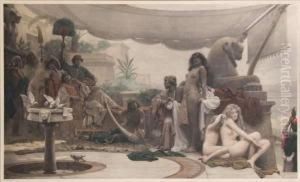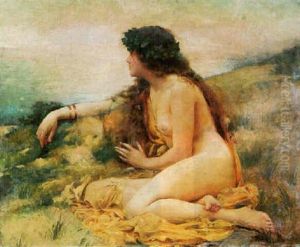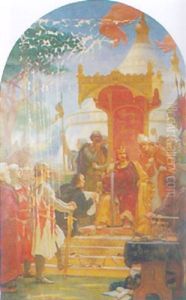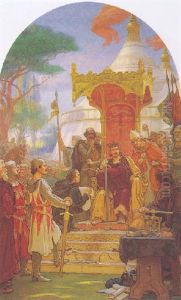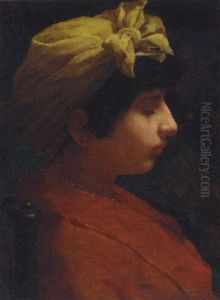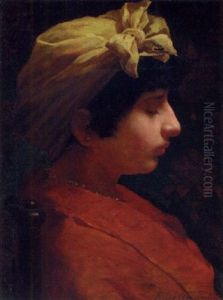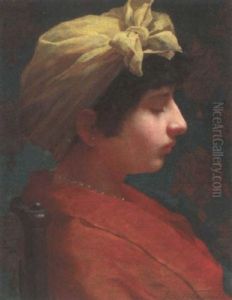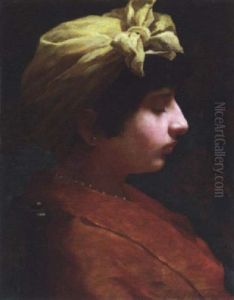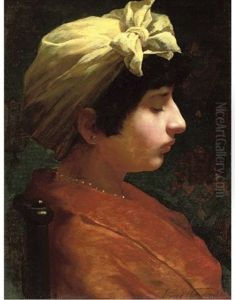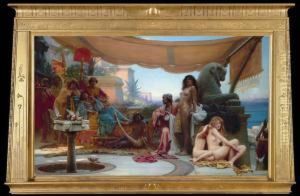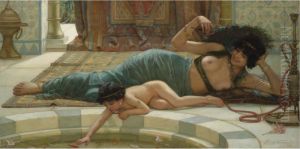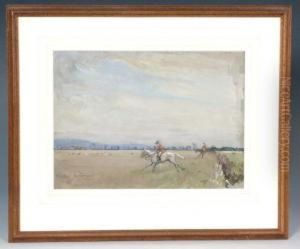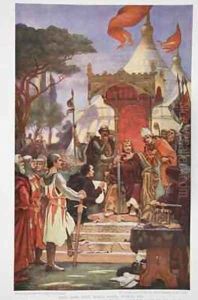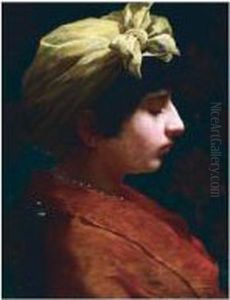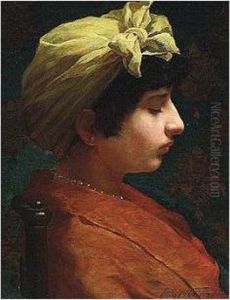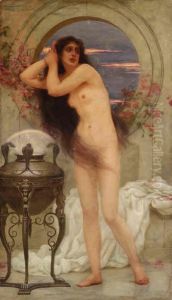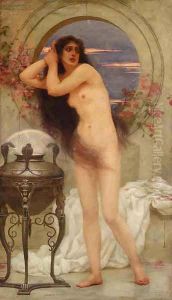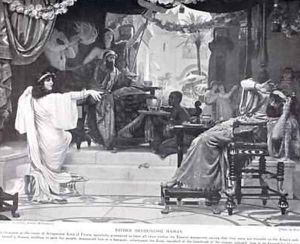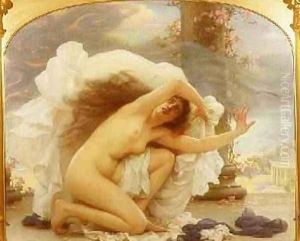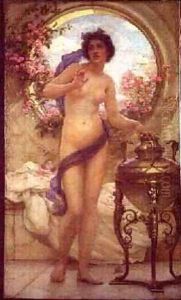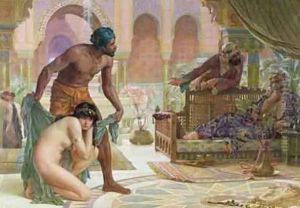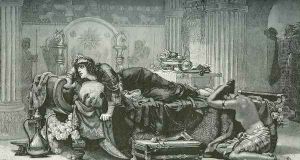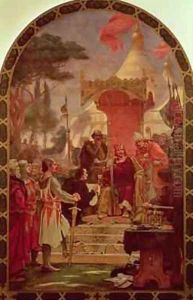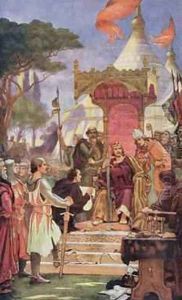Ernest Normand Paintings
Ernest Normand was a notable British painter, born in 1857. His works are often remembered for their exotic and historical themes, which were quite popular during the Victorian era. Normand was part of the late 19th-century British school of painting, which was characterized by its attention to detail, vivid use of color, and often, moral or narrative-driven subjects.
Normand's education in art began at the Royal Academy Schools, a prestigious institution that has nurtured many prominent artists in Britain. His style was influenced by the academic tradition, yet he managed to infuse his own distinct touch, especially in his depiction of Oriental and mythological subjects. He married Henrietta Rae, a fellow artist who was also his peer at the Royal Academy. The couple shared a studio and were known for their collaborative works, often painting together or influencing each other's styles.
Throughout his career, Normand tackled a variety of subjects, but he is especially recognized for his historical and mythological scenes. One of his most famous works, 'Salome', showcases his skill in portraying complex emotional states and his ability to render fabrics and textures in a realistic manner. His interest in the East and ancient civilizations led him to create works that not only displayed his technical prowess but also his imaginative capacity to transcend the contemporary British context and delve into the exotic and unknown.
Normand's contribution to British art was significant, though he may not be as widely remembered as some of his contemporaries. His works were exhibited at the Royal Academy and elsewhere, earning him recognition among his peers and the art-loving public of his time. Despite the changing tastes in art and the eventual shift towards Modernism, Normand's works remain a testament to the eclectic and richly detailed storytelling tradition of the Victorian era.
Ernest Normand passed away in 1923, leaving behind a legacy of art that continues to be appreciated for its beauty, technical skill, and historical value. His paintings offer a glimpse into the Victorian fascination with the ancient world, mythology, and the exotic, serving as valuable cultural artifacts that reflect the interests and ideals of his time.
